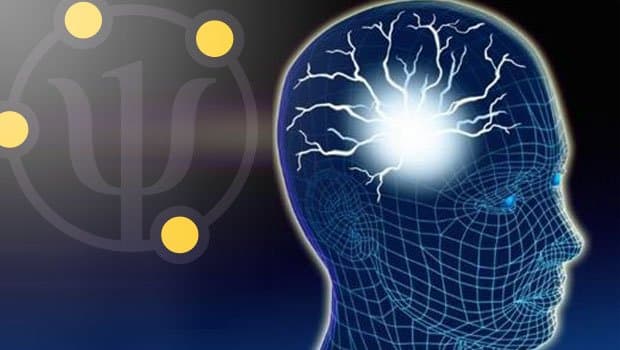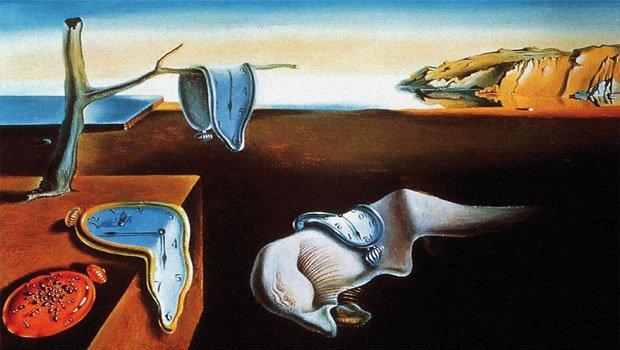Hypochondria seems to be an unexplored galaxy in the psychoanalytic world: there isnt’ a definition in the psychoanalytic Dictionary by Laplanche and Pontalis and even S. Freud had mentioned hypochondria only in his work “ Introduction to narcisism”. Once again he has demonstrated to be a genius saying the main things about this subject.
It is wellknown that the so called “hypochondriac neurosis” (we shall see that the word “neurosis” is inadequate, at least to describe how serious is the syndrome) is characterized by an extreme wonder for the body and the deseases that might involve it. The hypochondriac is always alarmed, not only in case of psycho-physical insanity and he is all the time busy in paying attention to the functioning of his body and in amplifying any microscopic unimportant synthom. The hypochondriac patient has a typical self-centred personality, has a masked tendency to isolate himself (with a snobish behaviour toward people, having only intellectual friends etc.) and when conditions get worst he is almost monomaniac, as regards the attention he gives to his body. The way he gets in contact with the world around is thank’s to his exceptional kowledge of the body which is better than the specialists’ (passion wins professional studying). Sometimes he’s an expert of alternative medicine (none of them are valid for the hypochondriac, who’s all the time looking for somebody listening to him). He takes hundreds of medical consultations and collects little chirurgical operations.
The passion for his body sometimes pushes the hypochondriac to become a doctor (sic!) or a pharmacist or an erborist, or he might become mad of health. In case of reaction formation , one can observe an opposite manifest behaviour which may coincide with a total indifference toward his health.
The syndrome’s name dates back to the ancient greeks who were used to consider that the desease was caused by viscera disorders situated under the xyfoideus cartlilage, and so the word hypochondria.
First DSM edition did not include hypochondria as a separate desease, “hypochondriac warry” was mentioned as a malignant synthom observed in psychotic depression; the syndrome was then included in DSM-II as hypochondriac neurosis and in DSM-III and DSM-R as hypochondria.
Freud had discusses this subject talking about parafrenia. This word was first used at the beginning of the 19th century to indicate madness and it was used by Freud to distinguish schizophrenia (parafrenia) from paranoia.
According to Freud the hypochondriac withdraws his interest and libido from external objects and concentrates both of them on the concerned organ. It is wellknown that Freud assumes that each organ is erogenetic (which means that has the capacity to send sexually exiting stimulus to the psyche) and that an alteration of this function corresponds to an alteration of the Ego libidinal investment.
In other words, hypochondriac withdraws libidinal investment from objects world in order to concentrate it on himself and this phenomenon is due to different factors such as his ground and a false present familiar environment.
Let’s see what Freud wrote about the libidinal block: “…we should ask ourselves the following question: why does the psychic life need to go over the orders of narcism to the objects world. According to our thinking we should say, once again, that this need appears when the Ego investment has gone over a certain range. A very strong egoism creates a protection against deseases; nevertheless, soon or later we must start loving in order not to get sick and if after a frustration one is not able to love, he gets sick”. And here we can see that Frued was a real genius where he makes an enlightening parallel between hypochondria and paraphrenia (schizophrenia) and between actual neurosis and psychoneurosis (hysteria and obsessional neurosis). The word actual neurosis means syndromes due to somatic actual causes, mainly at sexual function expenses (compulsory abstinence, compulsory sexual excitement, uncompleted or interrupted coitus, inadequate sexual discharge due to conflictual reasons) On the contrary, according to Freud the etiological origin of psychoneurosis can be find in infantile traumatic experiences that provoke repression and that return in a masked way in the present events, thanks to compulsion to repete. The sympthom of psychoneurosis (or translation neurosis) are due to a block of object- libido (I wish sexual possession of my mother, oedipus interdict releases, the outstanding libido investment on my mother, remains joint to that object and is going to receive several somatic elaborations). On the contrary, hypochondria and parafrenia sympthoms are due to a libidinal withdraw from objects which goes back to the Ego. I would like to add that, according to personal ground, libido migh be fixed to the Ego, provoking its ipertrophisation and consequently paranoic megalomanic delirium, or migh be projected on an actual external object; the result will be an erotomaniac paranoia or persecution delirium. It migh olso determine splitting of the Ego precessus(schizofrenia) or a soma investment: hypocondria.
As we can see, we’re talking about a serius syndrome, a bordeline stage more than a neurosis.
A 40 years old woman was caracterized by a false presence family ground: psyhotic mother, an absent father, mother’s victim, many borderline or neurotic relatives. She was an abandoned child who had only one signifiant relationship with a person who had allowded a sketch of object relation and probably saved her from the identification-projection to an absent or false present environment which might have filled her Ego of persecuting objects. She had stopped in the middle of the way; she had a character neurosis which became hypocondria each time she was separated by family objects. The investment objetc was her body and her family’s body. She was a perfect and efficient mother who checks all your freckles to make sure that everythng is ok, take appointments with doctors and in spite of herself will make you become a cavy.
Character neurotic does not present specific synthoms, but very often he has a compulsory behaviour. According to a very punctual definition of Jones, character neurosis is structueted inside the character, by producing an extreme pedantry, a meticulous life organisation and an intellectual sadism.
The patient had denied her childhood situation by keeping in her inconscious, idealized objects and by shifting her aggressivity on married life.
When she came for the first examination, she was continuosly fighting against her husband, but she couldn’t’ recodgnize it and was engaged in a non-stop activity for the organization of her childrens’ life.
She had serious hypocondriac symptoms, as well as several somatic disorders that gave her a strong pain (it is worthwhile to remind that somatic libido cathexis is energetic; try, for example, to put a body tissue under a lamp for many years: it will get burn, at least).
After a long micropsychoanalytical work, the patient became aware of the abandoned situation in which she spent her childwood. Consequently she could replace the aggressivity against her infantile objects and events releasing the present from the conflict. This elaboration was stimulated by watching a tv programme that showed desertic hills which surround Jerusalem. The patient said:” These two people are fighting for a desert?” In a little time she got rid of the projection defense and became aware of the affective desert of her life. At the same time pathological caractheristics of her character neurosis were reduced, but she got in contact with the hypochondriac pressure thanks to a revealer dream.
In the session she started by saying that the somatic disorders and hypochondriac manifestations that had desappeared, came back again few days before and she told the following dream:
I’m in the same room with someone sick, maybe one of my children and I can smell something discusting, like a suppuration wound, a death odor. I try to open the window to get fresh air come in, but the odor is very strong.
At the begining she gives an hypochondriac interpretation of the dream by saying: “If unconscious is able to understand what happens to the soma, is it suggesting me that I have a terrible desease?” and then “ Before I had that terrible pain I had a bitter taste in my mouth. She delays few more minutes describing her bodily sensations, but it is enough for me to say that the expression “to have a bitter taste in sombody’s mouth” indicates a very particular mood, to activate the elaboration.
The patient, with a high emotion, starts talking about her life as a desert: the marriage is braking down, her children are leaving since they can (finally) enjoy a free life, other people arroud are leaving too.
Due to compulsion to repeat, she used the desavowal as defence, as well as she did in the childwood : she didn’t see the desert, but she had to manage a sudden libido return, which was withdrawn from objects and according to her psychic ground, the elaboration was impossible . The obvious consequence was a strong cathexis of the body. The surrounding world was in a decomposition state, but she was blind and liked better to see her body ruined than to face her loneliness and abandoned experiences which would have put her in front of the desert of her childwood.
This is the reason why hypochondria may be defined a “somatic paranoia”: Ego refuses a psychic experience, but instead of using projection (as in paranoia) it uses soma cathexis, by developping, as in the case described, an hypochondriac worry about a tissue being decomposed.
Written by: Quirino Zangrilli © Copyright
* Translated by Bruna Marzi
Nel 2024 riceve il Premio Accademico d’Onore della Accademia Culturale Internazionale Cartagine 2.0.
Doctor Quirino Zangrilli was born in Fiuggi in 1955. Graduated with honours in Medicine and Surgery in 1980, he practices Psychoanalysis, with intensive method, since 1982. He is author of 72 scientific pubblications. He has attended as speaker or president of session to many national and international scientific Conventions. His book “La vita:involucro vuoto” (Life: empty involucre), published by Borla in 1993, has been in use by the Chair of Dynamic Psychology at Turin’s University since 1994. He is the author and founder of the multimedia review “Psicoanalisi e Scienza” (Psychoanalysis and Science), the most read Italian on line review of psychoanalysis. In 2012 he participated as a Speaker at the Scientific Festival of BergamoScienza. In 2013 he illustrated his research on the maternal-fetal interaction in the Special Session of the XI World Congress of Perinatal Medicine in Moscow with his relation “Intrauterine Imprinting”. He is visiting teacher at Moscow Institute of psychoanalysis and training psychoanalist of Swiss Institute of Micropsychoanalysis.
In 2024 he received the Honorary Academic Award of the Carthage 2.0 International Cultural Academy
Le Le Docteur Quirino Zangrilli est né à Fiuggi en 1955. Diplômé avec mention en Médecine et Chirurgie en 1980, il pratique la psychanalyse depuis 1982, en utilisant une technique intensive. Il est l’auteur de 72 livres et publications scientifiques. Il a participé en tant que conférencier ou président de session à de nombreuses conférences scientifiques nationales et internationales. Son livre “La vie : enveloppe vide”, publié par Borla en 1993, est adopté depuis 1994 par la Chaire de Psychologie Dynamique de l’Université de Turin. En 1994, il a reçu le “Prix national Ciociaria de médecine”. Il a conçu et fondé le magazine multimédia “Psicoanalisi e Scienza”, qui est le magazine de psychanalyse en ligne en italien le plus suivi au monde. (Source : Entireweb, Alexa, Google, Virgilio, Arianna., etc.). En 2012, il a participé en tant que conférencier à la colloque scientifique de BergamoScienza. En 2013, il a exposé ses études sur l’interaction materno-fœtale lors de la session spéciale du XIe Congrès mondial de médecine périnatale à Moscou avec le rapport “Intrauterine Imprinting”. Il est chargé d’enseignement au cours de spécialisation de trois ans en psychanalyse, psychothérapie psychanalytique et consultation psychanalytique à l’Université de Moscou. Il est membre didacticien de l’Institut Suisse de Micropsychanalyse et de la Commission pour la Pratique de celui-ci.
En 2024, il reçoit le Prix Académique Honoraire de l’Académie Culturelle Internationale Carthage 2.0.
В 2024 был награжден Почетной академической премией Академии Международной Культуры «Карфаген 2.0».















